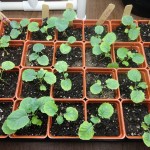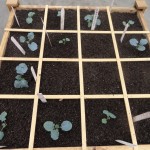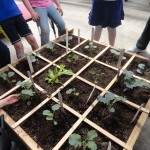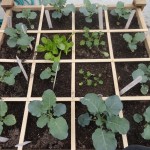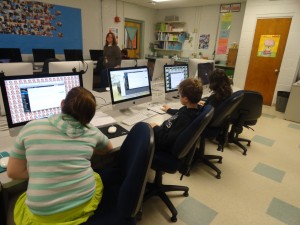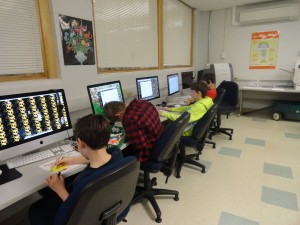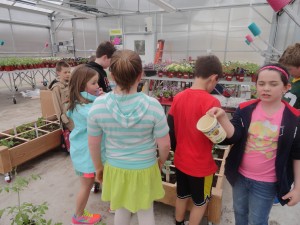 The weeks still seem to be passing by too quickly; more quickly than ever. Our days are full of so many lessons, projects and activities. Here’s a partial list of what we’re doing: informational writing about our animal, informational writing about our state, mastering division and fractions, reading and responding to both fiction and non-fiction, learning about the interconnectedness of life in our world and understanding patterns of growth and how habitats compare. We’re working on our portfolio wall, our digital portfolios and our blogs.
The weeks still seem to be passing by too quickly; more quickly than ever. Our days are full of so many lessons, projects and activities. Here’s a partial list of what we’re doing: informational writing about our animal, informational writing about our state, mastering division and fractions, reading and responding to both fiction and non-fiction, learning about the interconnectedness of life in our world and understanding patterns of growth and how habitats compare. We’re working on our portfolio wall, our digital portfolios and our blogs.
S.E.L. – Empathy
Knowing how we feel and how we make others feel
 In and around all the projects and activities we are working on, your children are taking care of one another by being great friends. We are thinking about what habits support learning: our own and the learning of others. This week we began a discussion around whether you can be a “bully” to yourself. You can. Every time you say you are not good enough, or not capable of doing something new – that’s a self-put down. We’ve been trying to come up with options so instead of saying, “I’m not good at…” try saying “If I keep trying, I’ll get better at…” Instead of, “I can’t do it” try saying “I can start and then I can ask for help when I feel stuck.”
In and around all the projects and activities we are working on, your children are taking care of one another by being great friends. We are thinking about what habits support learning: our own and the learning of others. This week we began a discussion around whether you can be a “bully” to yourself. You can. Every time you say you are not good enough, or not capable of doing something new – that’s a self-put down. We’ve been trying to come up with options so instead of saying, “I’m not good at…” try saying “If I keep trying, I’ll get better at…” Instead of, “I can’t do it” try saying “I can start and then I can ask for help when I feel stuck.”
I am hoping that we will catch ourselves when we make comments that begin with “I can’t…”, “I don’t…”, “I’m not…”, “Everyone else can…, but…” so we can begin to turn our impressions of ourselves around to feel more capable and full of possibility. If we believe we can, we can. We can all try and we can all help each other. We can recognize that practice makes progress and effort leads to growth.
Learning the Relationship Between Fractions and Division
Last week our morning mini-lessons were designed to explore long division. We worked to understand division as a concept and connected it to fractions. Both deal with breaking an amount into equal parts or fair shares. Each morning the lesson was greeted with moans and groans. Either, “not this again, I don’t get it” or “I already know how to do this, why…” We persevered. We worked to turn the talk around to look at the process with an open mind. We began to look at the steps to see exactly when understanding was lost. And we began to ask ourselves, “What can I do to help my friends understand – how did I make this make sense to me?”
This week the class is working to practice this more independently during our daily problem solving. Though still greeted with a bit of nervousness, the class is making steady progress. The understanding is still in the early stages, but there is a growing feeling of accomplishment as each problem is met and solved. When you look at your child’s work from the last two weeks I think you’ll see how he or she is trying to solve some different kinds of problems. I am proud of them to taking the risk to try new things and to work through challenges to learn.
Food Chains – Food Webs
Taking Care of Our World
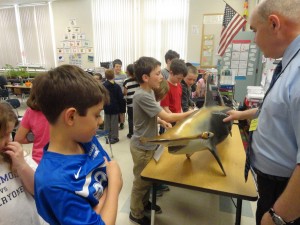 Each of the children has created a food chain featuring the animal they have chosen to study. We know that each food chain begins with sun and water and some type of plant because only plants can make their own energy. Some food chains are short, involving just two or three links. Some are more complex with five or six links. All, if we explore a little deeper and add in the decomposers turn into endless cycles. These cycles we are discovering are all related. Chains turn into food webs and we are learning about how every organism is linked around the world.
Each of the children has created a food chain featuring the animal they have chosen to study. We know that each food chain begins with sun and water and some type of plant because only plants can make their own energy. Some food chains are short, involving just two or three links. Some are more complex with five or six links. All, if we explore a little deeper and add in the decomposers turn into endless cycles. These cycles we are discovering are all related. Chains turn into food webs and we are learning about how every organism is linked around the world.
When we began our growing and habitat projects we wondered if it mattered whether one species went extinct or not. We all agreed that it was a terrible thing – because to not exist was bad. As we read and learn more we are realizing it is much more than that. We are also learning about what people are doing to turn things around and hopefully coming up with things that we can do ourselves to help heal the world.
Bits and Pieces
- We’ve almost finished The Secret of Zoom. Christina’s found her mom, but she’s also learned how careless people can be with others when they wish for importance, recognition and power. Lenny Loomski is not a nice man.
- It has been two months since we planted our broccoli seeds. We moved our seedlings out to the greenhouse two weeks ago. We tend to the plants and keep track of the plant changes from week to week. It is pretty amazing to notice the changes and to keep track of them in our Diary of Broccoli. Here is one entry:
March 20 – 3 weeks old
My leaves are bigger than before. My stem is getting thicker. My roots are getting longer and slowly spreading out. I have more leaves and I’m proud I’m getting bigger. I think I’m starting to figure out what I’m going to be. I heard the kids say, “Oh, this is going to be the best broccoli ever.” I’m pretty sure I’m going to be a vegetable.
your friend,
Broc
- These pictures show how the plants have changed in the last four weeks. Pretty remarkable!
- Thank you for the comments left on the student blogs. The children really appreciate being read.
